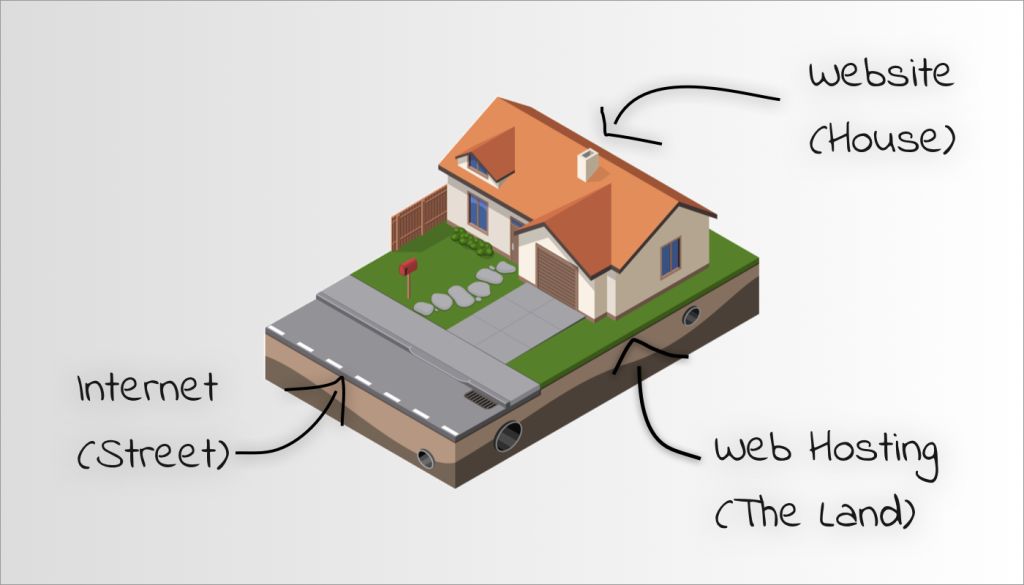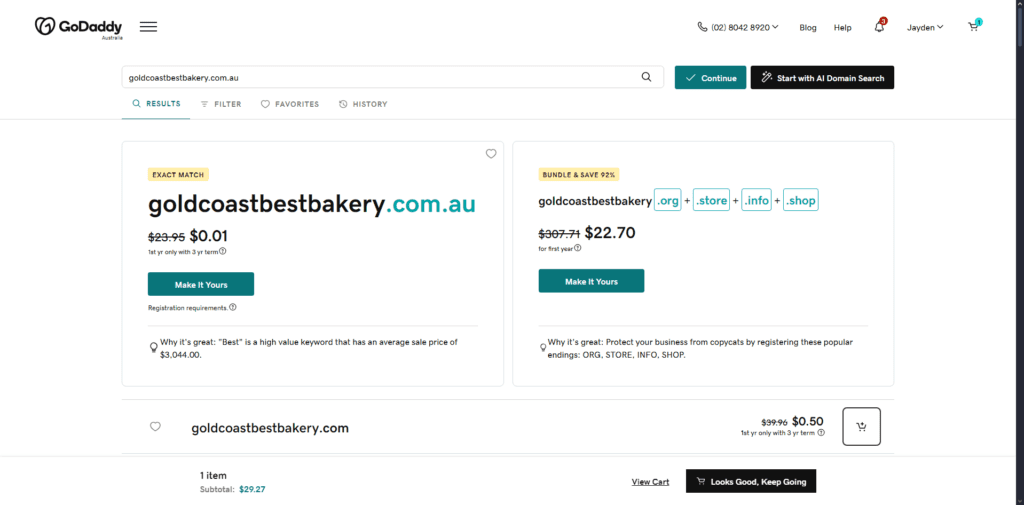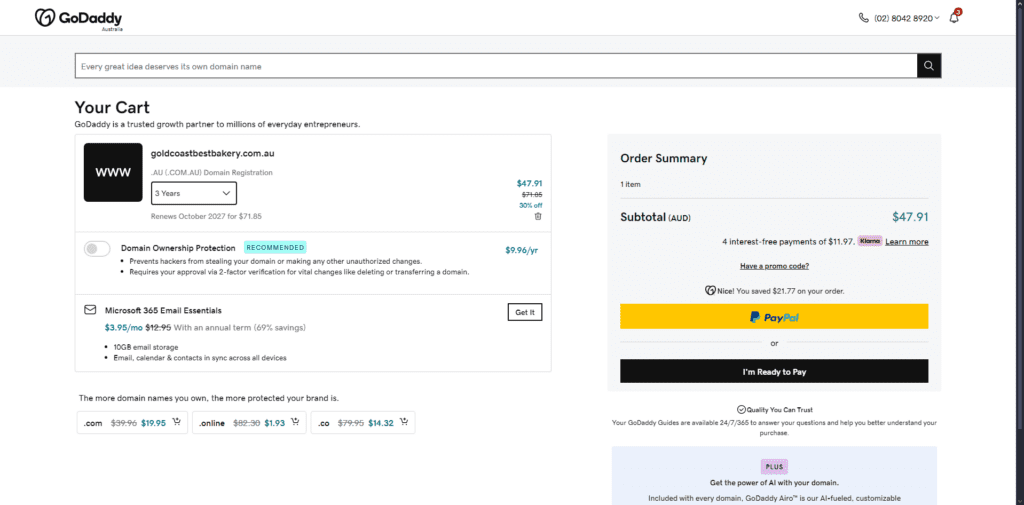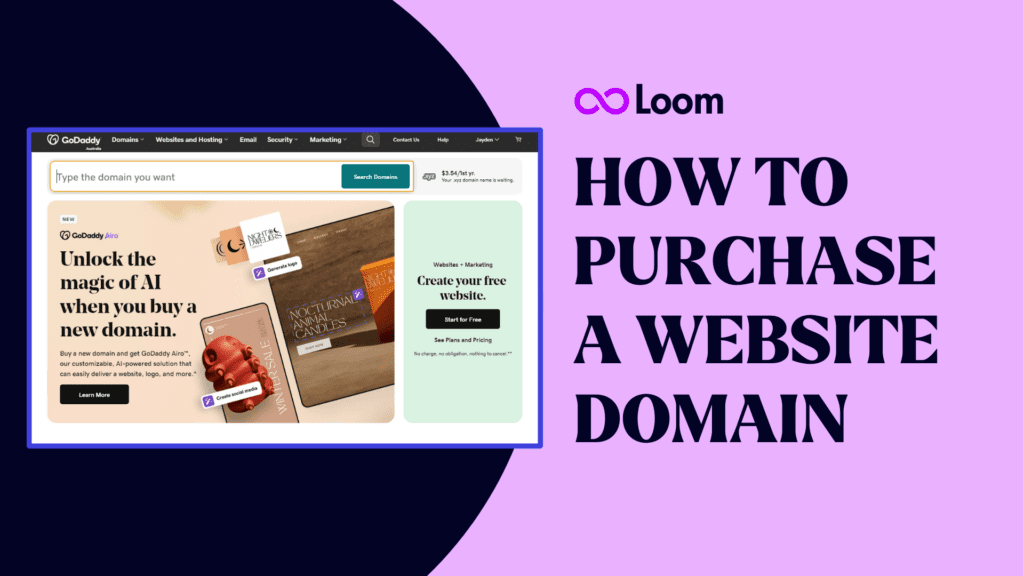Whether you’re starting a small business, launching a personal blog, or setting up an online store in the thriving Gold Coast region, learning how to purchase a website domain name is an essential first step in establishing your online presence. Think of your domain as your digital shopfront—it’s where people will find you online, and much like a physical store, it plays a huge role in how customers perceive your brand and how easily they can access your content.
If this is your first time buying a domain, the process can seem daunting or even overwhelming. But don’t worry—you’re not alone! Many people find this stage challenging, unsure of where to start or concerned about choosing the wrong domain name. The good news is that purchasing a domain is simpler than you might think, and we’ll walk you through each step. By the end of this guide, you’ll feel confident in selecting and securing a domain name that supports your business or project and helps it thrive online.
Why Your Domain Name is So Important
Before diving into the process of purchasing a domain, it’s crucial to understand why your domain name matters so much. Your domain is not just a web address, but your digital identity. It’s the first point of interaction people will have with your brand, and as we know, first impressions are everything.
A well-chosen, memorable domain name can significantly boost your online credibility and brand recognition. It helps build trust with your audience, especially when your domain is professional and easy to recall. Additionally, a strong domain name will make it easier for potential customers to find you online, giving you an edge over competitors and improving your search engine visibility.
For example, if you’re operating a business on the Gold Coast, selecting a domain that reflects your business name or service area can help reinforce your local presence and make it easier for customers in your region to discover you. So, your domain name is more than just an address—it’s a vital part of your brand’s foundation and plays a big role in determining your online success.

What is a Domain Name?
At its core, a domain name is your website’s address on the internet, such as “yourbusiness.com.au”. Just like a physical store needs a street address, your website needs a domain name so that people can find it online.
Every domain name consists of two parts: the second-level domain (SLD) and the top-level domain (TLD).
The second-level domain is typically your business name or a related word or phrase that identifies your brand. The top-level domain is the extension that follows, such as “.com,” “.net,” or “.com.au.” For businesses in Australia, using “.com.au” is especially advantageous as it signals to your audience that you are a local business, which can help build trust with Australian customers.
For example, in loomdigital.com.au, “loomdigital” is the second-level domain, and “.com.au” is the top-level domain. Together, these create the full domain name that people will type into their browser to reach your site.
The Difference Between a Domain Name and Hosting
A common point of confusion for many first-time website owners is the distinction between a domain name and hosting. While your domain is the address that leads people to your site, hosting is the actual space where all your website files live. It’s helpful to think of it this way: your domain is like the street address, and hosting is the building or land where your website sits. Both are essential—you can’t have a functioning website without both a domain and hosting. To learn more about the differences between domain and hosting, check out this guide from WPBeginner.

How to Choose the Perfect Domain Name
Choosing a domain name is one of the most important decisions you’ll make for your online presence. Your domain name not only represents your brand but also impacts how easily people can find and remember you. Let’s explore some key factors to consider when selecting the ideal domain name for your website.
Keep it Simple, Memorable, and Brandable
The most effective domain names are short, simple, and easy to remember. Think about it from a user’s perspective—if your domain name is too long, difficult to spell, or hard to pronounce, it will be difficult for people to remember or type correctly into their browsers. As a rule of thumb, aim for a name that’s intuitive and flows easily. Imagine telling someone your domain name over the phone—would they understand it clearly the first time, or would they need you to repeat or spell it out?
Include Relevant Keywords, but Keep it Natural
While keywords are important for SEO, it’s crucial to strike a balance when incorporating them into your domain name. Keywords that relate to your business or industry can give your domain a small SEO boost by helping search engines understand what your site is about. For example, if you own a bakery in the Gold Coast, a domain like “goldcoastbakery.com.au” might help search engines rank your site higher for relevant local searches. However, avoid overstuffing keywords or creating awkward, hard-to-read domain names. Your domain should still sound natural and represent your brand. Learn more about how keywords can impact your SEO.
Choose the Right Extension
For Australian businesses, choosing the right domain extension is vital. The “.com.au” extension is widely recognised and trusted within Australia, signaling that you’re a legitimate local business. However, depending on your industry or target market, other extensions such as “.com” or “.net” might be appropriate. There are also newer, industry-specific extensions like “.tech,” “.store,” or “.online,” which may suit niche businesses or ecommerce stores.
Avoid Trademarks and Similar Names
Before settling on a domain name, make sure it doesn’t infringe on an existing business’s name or trademark. Failing to do this could lead to legal complications down the road. A quick Google search or checking with IP Australia will help ensure that your chosen domain is unique and doesn’t conflict with existing trademarks.
Think Long-Term
Finally, consider the long-term vision for your business when choosing a domain name. Will your domain still make sense if your business grows or expands into new areas? For example, if you’re launching a small cafe but plan to expand into a full-service restaurant, you may want a broader name that will work across different services. A more general name gives your brand room to grow without needing a costly domain change later on.
How to Check the Availability of Your Domain Name
Once you have a domain name in mind, it’s time to check whether it’s available. Given the millions of websites online today, it’s possible that someone else may have already registered your desired domain. Fortunately, most domain registrars offer simple search tools that allow you to quickly check whether your domain is available. You can use tools like GoDaddy’s domain checker or Namecheap’s search tool to see if your domain is available.
If your preferred domain is already taken, you still have options. You might try variations of your original idea, such as adding your location (e.g., “goldcoastbestbakery.com.au”) or using a different extension if “.com.au” is unavailable.

Where to Purchase a Domain Name: Choosing a Domain Registrar
Once you’ve confirmed that your desired domain is available, the next step is purchasing it. To do this, you’ll need to use a domain registrar—a company that sells and registers domain names. Popular registrars like GoDaddy, Namecheap, and Google Domains make it easy to search for and register domains, and each offers a range of pricing and additional services such as domain privacy protection and automatic renewals.
Factors to Consider When Choosing a Domain Registrar
When selecting a registrar, it’s important to consider factors such as price, customer support, and added features. Pricing can vary depending on the domain extension and any additional features you choose. For example, many registrars offer introductory rates that increase upon renewal, so always check renewal fees before purchasing. It’s also a good idea to choose a registrar that offers easy domain management tools and reliable customer support, especially if this is your first time buying a domain.
How to Purchase a Domain Name

Once you’ve found the perfect domain name and chosen a registrar, purchasing your domain is simple. Here’s a step-by-step guide to help you:
- Search for Your Domain: Use the search tool provided by your registrar to confirm that your chosen domain name is available.
- Choose Your Registration Period: Domains are typically registered for a period of one year, but most registrars allow you to register for longer periods, up to ten years. Consider registering your domain for at least two to three years to avoid the hassle of renewing too soon.
- Add Optional Features: Many registrars offer extra features, such as domain privacy protection, which hides your personal information from public databases. This is a good option for businesses wanting to protect their privacy.
- Complete Payment: Once you’ve selected your registration period and any optional features, simply enter your payment details to complete the purchase.
- Enable Auto-Renewal: Setting up automatic renewal is highly recommended to ensure you don’t accidentally let your domain expire. This way, your domain will automatically renew each year without you needing to remember.
Securing Your Domain name for Long-Term Success
Once you’ve successfully purchased your domain, it’s important to take a few additional steps to secure it and protect your investment.
Enable Auto-Renewal
One of the easiest ways to secure your domain is by enabling auto-renewal. This prevents your domain from accidentally expiring if you forget to renew it manually, ensuring that your website remains accessible to visitors without interruption.
Set Up Two-Factor Authentication
For added security, consider enabling two-factor authentication (2FA) on your domain registrar account. 2FA requires you to provide an additional form of verification—such as a code sent to your phone—before making changes to your account. This helps prevent unauthorised access to your domain.
Keep Your Contact Information Updated
Finally, ensure that your contact details—especially your email address—are always up to date in your registrar’s system. This ensures that you’ll receive important notifications, such as reminders about domain renewals or changes to your account.
Get Started with Your Online Presence
Now that you understand how to purchase a domain name, you’re ready to take the next step in establishing your online presence. Whether you’re a small business owner on the Gold Coast or a budding entrepreneur launching a new project, having the right domain is the foundation of your digital success.
At Loom Digital, we’re here to help you through every stage of your online journey—from domain registration to web design, SEO, and more. If you need guidance or support, reach out to us today. Let’s work together to create a powerful online presence for your brand.
